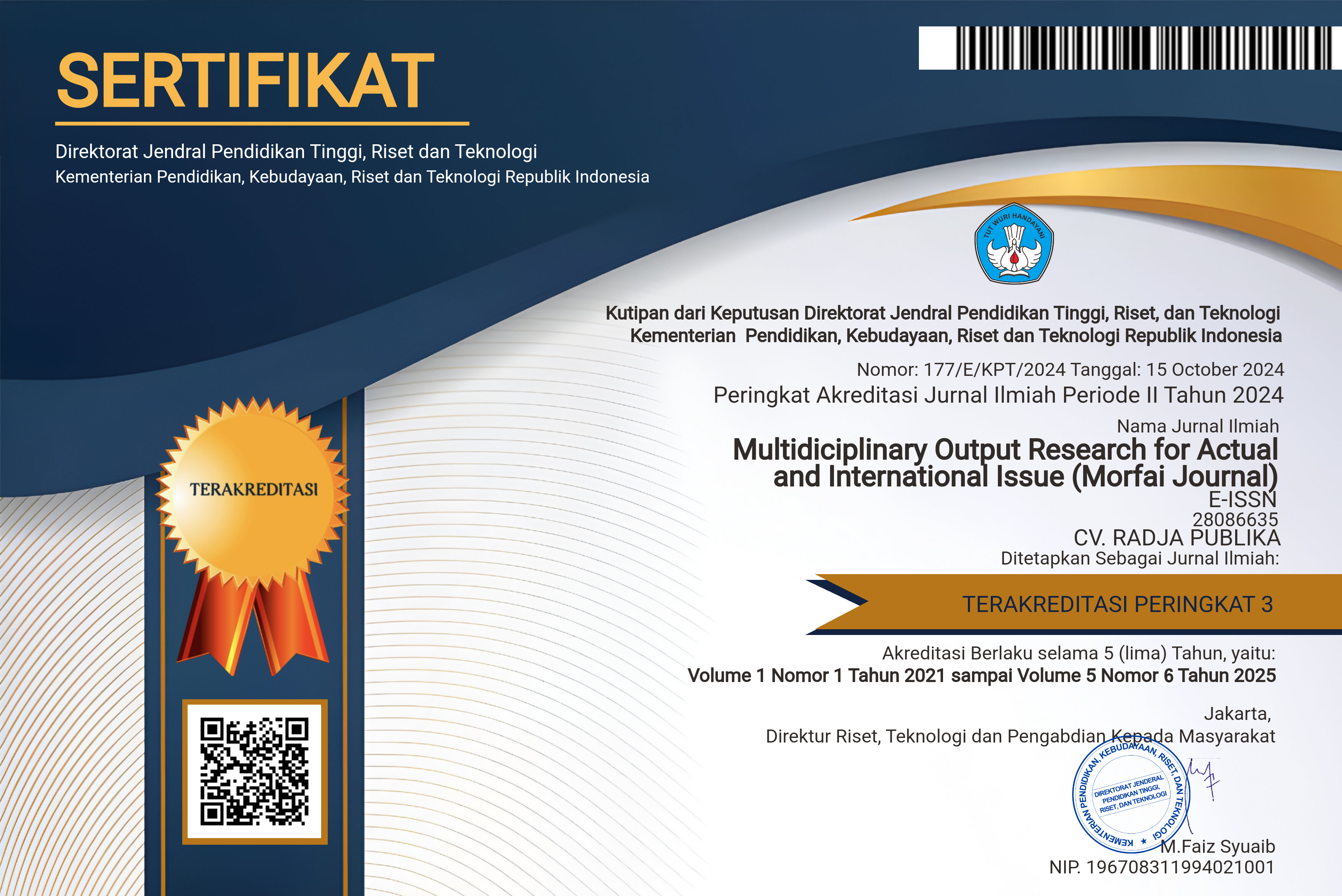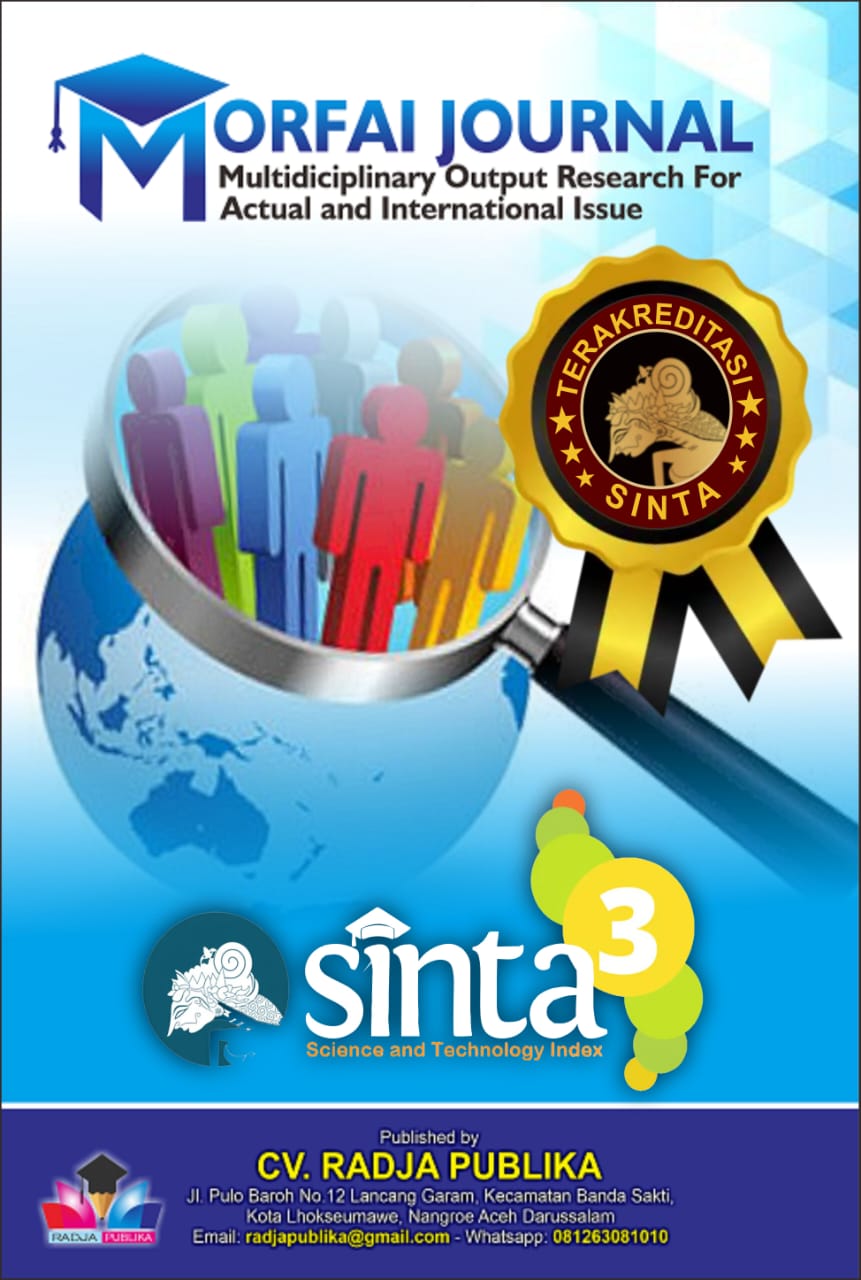REACTUALIZATION OF THE NON-ALIGNED PRINCIPLE IN INDONESIA’S DIPLOMACY UNDER PRABOWO’S ERA: A CASE STUDY OF THE STATEMENT AT SPIEF 2025
Main Article Content
Paramita Maulidya
This article analyzes the recontextualization of the Non-Aligned principle in Indonesia’s foreign policy under
President Prabowo Subianto, using his speech at the St. Petersburg International Economic Forum (SPIEF) 2025
as a case study. The focus of this research is how Indonesia’s free and active principle is reinterpreted within the
dynamics of a multipolar geopolitical order and growing rivalries among major powers. This study is significant as
it demonstrates that the Non-Aligned principle is no longer a mere historical symbol but an adaptive diplomatic
strategy that strengthens Indonesia’s position as an independent and constructive middle power. Employing the
theoretical frameworks of Foreign Policy Analysis (FPA), Middle Power Diplomacy, and Role Theory, the study
adopts a qualitative-descriptive method with a case study approach and applies discourse and content analysis
techniques. Data were obtained from the President’s official speech, SPIEF documents, and credible media reports.
The findings reveal that President Prabowo’s speech reflects Indonesia’s commitment to active neutrality
maintaining political and military non-alignment while proactively promoting peaceful solutions and cross-bloc
cooperation. The revitalization of the Non-Aligned principle thus represents Indonesia’s adaptive diplomatic
strategy to preserve sovereignty and global relevance amid contemporary geopolitical shifts.
Keywords: Foreign Policy, Global Diplomacy, Middle Power, Non-Aligned, Prabowo
Acharya, A. (2011). Norm subsidiarity and regional orders: Sovereignty, regionalism, and rule-making in
the Third World. International Studies Quarterly, 55(1), 95–123.
https://academic.oup.com/isq/article/55/1/95/1799064
Acharya, A. (2011). Whose ideas matter? Agency and power in Asian regionalism. Cornell University
Press.
Acharya, A. (2021). Multipolarity and the future of the global order. Global Asia, 16(1), 18–22.
https://globalasia.org/v16no1/feature/multipolarity-and-the-future-of-the-global-order_amitav-ach
arya
Publish by Radja Publika
ARTICLE TITLE
Author 1 et al
Acharya, A. (2023). Multipolarity and the future of global order. Oxford University Press.
https://global.oup.com/academic/product/multipolarity-and-the-future-of-global-order-978019887
Anwar, D. F. (1994). Indonesia’s foreign policy after the Cold War. Southeast Asian Affairs, 1994,
–141. https://www.jstor.org/stable/27912124
Anwar, D. F. (2022). Neutrality in an age of great power rivalry: Indonesia’s strategic response. ISEAS
Perspective, 2022(45). https://www.iseas.edu.sg/articles-commentaries/iseas-perspective/2022-45/
Anwar, D. F. (2023). Indonesia’s foreign policy: Continuity and change under Jokowi and beyond.
Contemporary Southeast Asia, 45(1), 23–45. https://muse.jhu.edu/article/898123
Anwar, D. F. (2023). Kebijakan luar negeri Indonesia pasca-Jokowi: Melanjutkan atau merubah? The
Habibie Center. https://www.habibiecenter.or.id
Anwar, D. F. (2024). Inclusive multilateralism in Indonesia’s foreign policy. ISEAS Perspective, 2024(3),
–12.
https://www.iseas.edu.sg/articles-commentaries/iseas-perspective/indonesias-inclusive-multilatera
lism-2024/
ASEAN Secretariat. (2019). ASEAN outlook on the Indo-Pacific (AOIP).
https://asean.org/asean2020/asean-outlook-on-the-indo-pacific/
Choi, J. J. (2013). Role theory and middle power diplomacy: Comparing Korea and Indonesia. Asian
Journal of Peacebuilding, 1(2), 227–253. https://ipus.snu.ac.kr/eng/sub/publications_journal.asp
Chong, A. (2020). Hedging in Southeast Asia: A strategic response to great power rivalry. Contemporary
Southeast Asia, 42(2), 224–249. https://doi.org/10.1355/cs42-2b
Cooper, A. F., Higgot, R., & Nossal, K. R. (1993). Relocating middle powers: Australia and Canada in a
changing world order. UBC Press. https://press.ubc.ca/relocating-middle-powers/
Djalal, D. H. (2022). Diplomasi Indonesia dan netralitas aktif dalam krisis global. Kompas.id.
https://www.kompas.id/baca/opini/2022/04/21/diplomasi-indonesia-dan-netralitas-aktif
Fitriani, E. (2022). Indonesia's leadership in G20: Managing polarization through inclusive
multilateralism. CSIS Commentaries.
https://www.csis.or.id/publications/indonesias-leadership-in-g20
Gerindra. (2025, June 21). Presiden Prabowo tegaskan komitmen Indonesia pada prinsip nonblok dan
solusi damai di SPIEF 2025.
https://gerindra.id/2025/06/21/presiden-prabowo-tegaskan-komitmen-indonesia-pada-prinsip-non
blok-dan-solusi-damai-di-spief-2025/
Goh, E. (2005). Meeting the China challenge: The U.S. in Southeast Asian regional security strategies.
East-West Center.
https://www.eastwestcenter.org/publications/meeting-china-challenge-us-southeast-asian-regional
-security-strategies
Goh, E. (2007). Great powers and hierarchical order in Southeast Asia: Analyzing regional security
strategies. International Security, 32(3), 113–157. https://doi.org/10.1162/isec.2008.32.3.113
Hatta, M. (1953). Mendayung antara dua karang. Departemen Penerangan Republik Indonesia.
Holsti, K. J. (1970). National role conceptions in the study of foreign policy. International Studies
Quarterly, 14(3), 233–309. https://doi.org/10.2307/3013584
Hooijmaaijers, B., & Keijzer, N. (2023). Economic diplomacy in a fragmenting world: The case of the
Indo-Pacific Economic Framework. Journal of Common Market Studies, 61(2), 265–284.
https://doi.org/10.1111/jcms.13382
Hudson, V. M. (2005). Foreign policy analysis: Actor-specific theory and the ground of international
relations. Foreign Policy Analysis, 1(1), 1–30. https://doi.org/10.1111/j.1743-8594.2005.00001.x
Kortunov, A. (2023). SPIEF and the emerging world order: Why it matters. Russian International Affairs
Council.
https://russiancouncil.ru/en/analytics-and-comments/analytics/spief-and-the-emerging-world-orde
r/
Publish by Radja Publika
ARTICLE TITLE
Author 1 et al
Krippendorff, K. (2004). Content analysis: An introduction to its methodology (2nd ed.). SAGE
Publications. https://us.sagepub.com/en-us/nam/content-analysis/book232835
Kuik, C. C. (2008). The essence of hedging: Malaysia and Singapore’s response to a rising China.
Contemporary Southeast Asia, 30(2), 159–185. https://www.jstor.org/stable/41220402
Leifer, M. (1983). Indonesia's foreign policy. Allen & Unwin.
Neuman, W. L. (2014). Social research methods: Qualitative and quantitative approaches (7th ed.).
Pearson Education.
Nugroho, A. (2023). Menakar netralitas Indonesia di tengah rivalitas IPEF dan BRI. Jurnal Global
Strategis, 17(1), 45–62. https://doi.org/10.22146/jgs.2023.v17i1.11252
Sukma, R. (1995). The evolution of Indonesia’s foreign policy: An Indonesian view. Asian Survey, 35(6),
–505. https://doi.org/10.2307/2645614
The Jakarta Post. (2024). Prabowo’s foreign policy direction: Realism, continuity, and strategic
autonomy.
https://www.thejakartapost.com/paper/2024/12/19/prabowo-foreign-policy-direction.html
The Moscow Times. (2025, June 22). Russia welcomes Indonesia’s neutral peace message at SPIEF.
https://www.themoscowtimes.com/2025/06/22/indonesia-neutrality-appreciated-spief-a83492
Van Dijk, T. A. (1997). Discourse as social interaction. SAGE Publications.
https://us.sagepub.com/en-us/nam/discourse-as-social-interaction/book226189
Waltz, K. N. (1959). Man, the state, and war: A theoretical analysis. Columbia University Press.
Weatherbee, D. E. (2005). International relations in Southeast Asia: The struggle for autonomy. Rowman
& Littlefield. https://rowman.com/ISBN/9780742539262
Yin, R. K. (2018). Case study research and applications: Design and methods (6th ed.). SAGE
Publications.
https://us.sagepub.com/en-us/nam/case-study-research-and-applications/book250150









